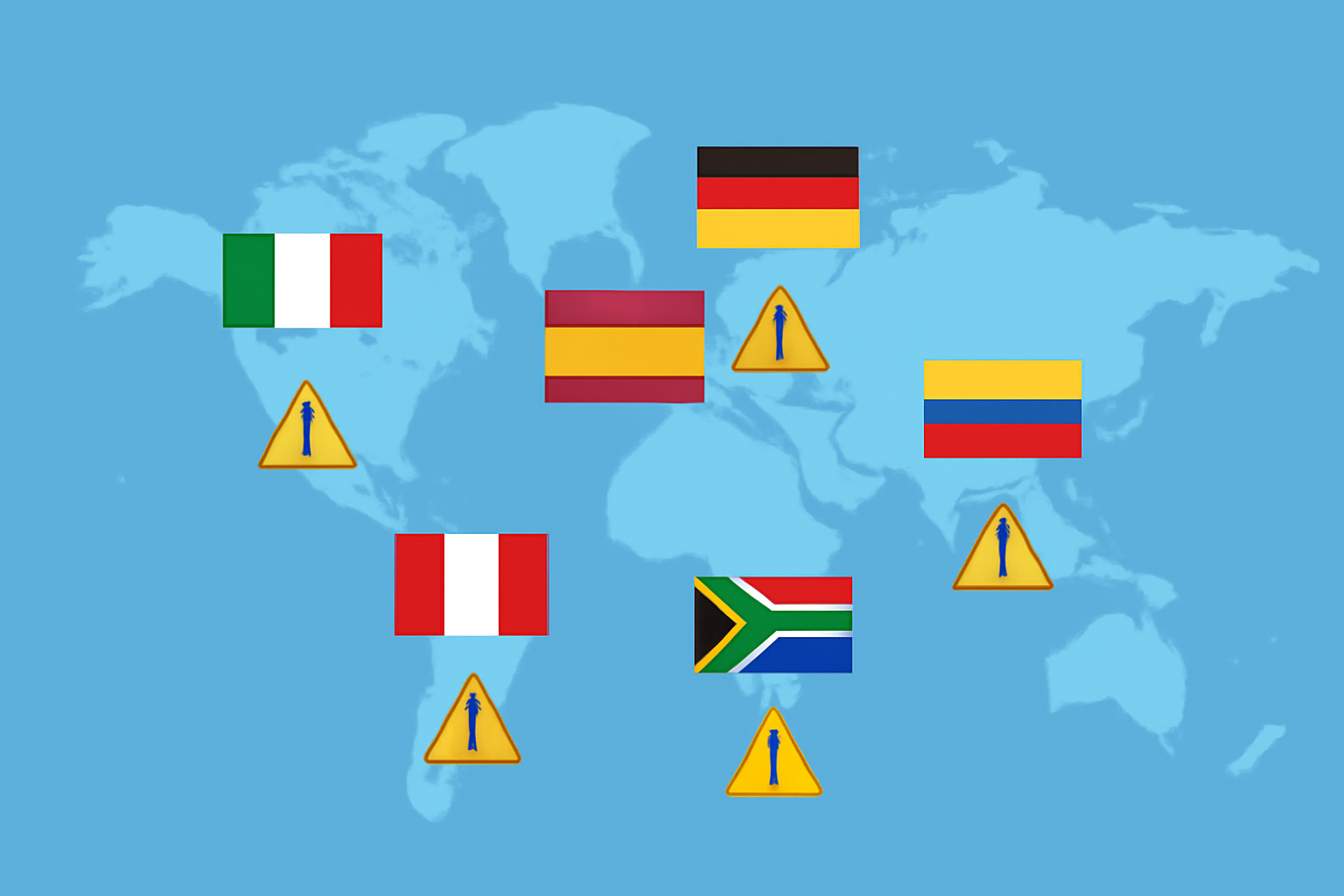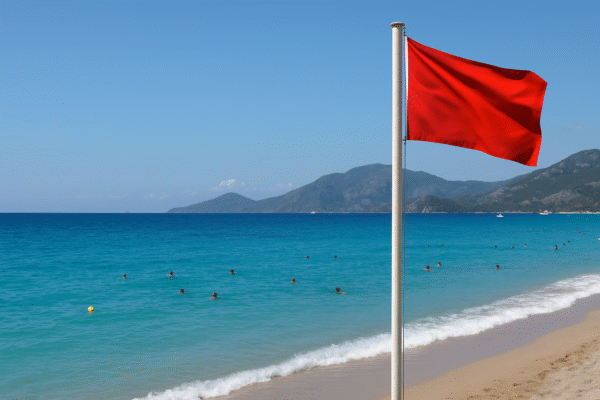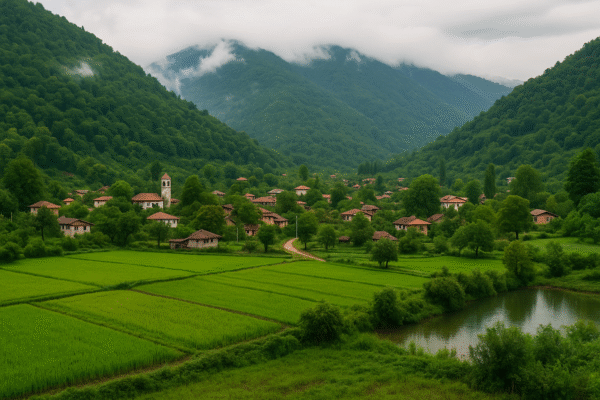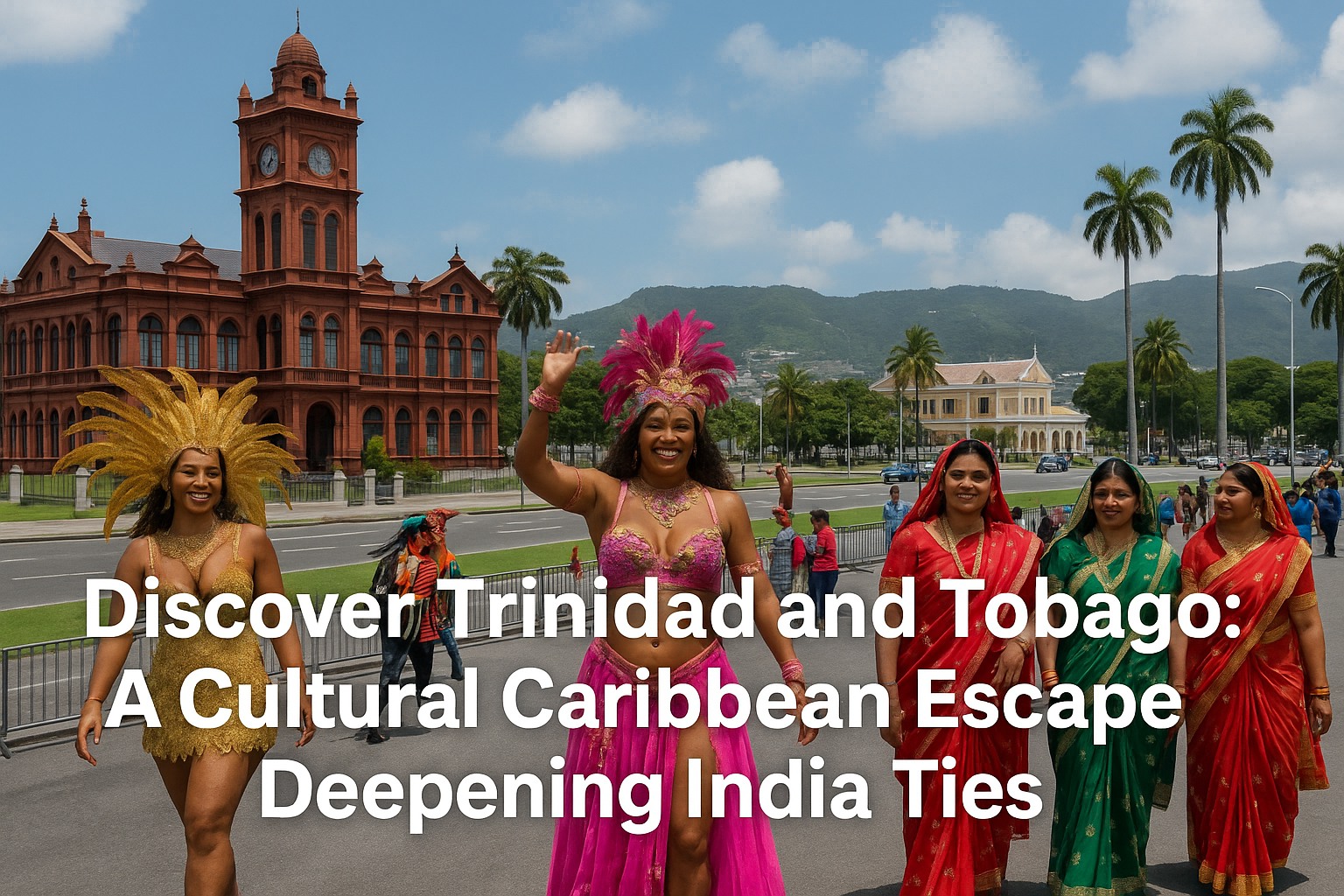Trinidad and Tobago, a twin-island nation located off the northeastern coast of South America, is one of the Caribbean’s most culturally diverse and intriguing destinations. Known for its vibrant festivals, lush landscapes, and flavorful cuisine, the country is once again in the global spotlight with the recent visit of Indian Prime Minister Narendra Modi. His visit underlines the enduring India-Caribbean ties and opens doors for stronger bilateral collaboration, particularly in tourism, trade, and cultural exchange.
Where is Trinidad and Tobago?
Geotagged at 10.6918° N, 61.2225° W, Trinidad and Tobago lies at the southern tip of the Caribbean archipelago. The larger island, Trinidad, features a dynamic urban center—Port of Spain, the capital—while Tobago is cherished for its tranquil beaches and untouched nature reserves. The islands are surrounded by the Caribbean Sea to the north and the Atlantic Ocean to the east, making them a gateway between South America and the Caribbean.
Getting There from India
Travelers from India can reach Trinidad and Tobago by connecting through major global hubs such as London, Toronto, or New York. Flights from New Delhi or Mumbai typically require two or more layovers, with a total journey time averaging 29 to 32 hours. The final leg lands at Piarco International Airport (POS), about 45 kilometers from Port of Spain via the Churchill Roosevelt Highway.
Direct regional connections also make it easy for travelers from Caribbean or North American destinations to explore the island, further enhancing its status as a strategic hub for tourism in the southern Caribbean.
A Cultural Mosaic Rooted in History
Trinidad and Tobago became independent from British colonial rule in 1962 and declared itself a republic in 1976. The nation’s population is a unique blend of African, Indian, European, Chinese, and Indigenous descent, contributing to its dynamic cultural scene. Today, Indo-Trinidadians make up nearly 40% of the population, preserving their ancestral traditions through language, food, music, and religion.
One of the country’s most iconic events is the Trinidad Carnival, often dubbed the “Greatest Show on Earth.” Held annually in Port of Spain, it features extravagant costumes, steelpan music, calypso, and soca performances that bring both locals and tourists to the streets in celebration.
Indo-Caribbean Legacy: A Deep-Rooted Connection
The connection between India and Trinidad and Tobago dates back to 1845, when Indian indentured laborers arrived to work on sugar plantations. Over the generations, they have contributed to the nation’s growth in sectors ranging from education and politics to agriculture and the arts.
During Prime Minister Narendra Modi’s recent state visit, he met with the Indian diaspora and reaffirmed India’s commitment to deepening cultural and economic ties. The Indian government also announced initiatives aimed at enhancing student exchanges, digital cooperation, and mutual tourism development between the two nations.
Cuisine: A Culinary Adventure Awaits
Trinidad and Tobago’s food scene is a delightful expression of its multicultural identity. A must-try dish for visitors is “doubles”—spiced chickpeas sandwiched between two pieces of fried flatbread, often served with pepper sauce and chutney. Other iconic dishes include:
- Roti: Indian-inspired flatbread filled with curry meats or vegetables
- Bake and Shark: Fried shark served in bread with condiments, famously found at Maracas Bay
- Pelau: A one-pot rice dish made with meat, pigeon peas, and coconut milk
- Callaloo: A creamy soup made from dasheen leaves and okra
Street food stalls are a cultural experience in themselves, where the atmosphere is festive and flavors are bold. Local drinks like sorrel, mauby, and Trinidadian rum punch round off the meal with tropical flair.
Tobago: Serenity and Natural Wonders
While Trinidad bustles with festivals and city life, Tobago offers tranquility and eco-tourism. Renowned for its coral reefs and nature trails, it’s home to the Tobago Main Ridge Forest Reserve, the oldest legally protected forest reserve in the Western Hemisphere. Activities such as snorkeling, birdwatching, and hiking attract nature lovers looking for a slower-paced experience.
A Tourism Sector on the Rise
According to the Trinidad and Tobago Tourism Agency Limited (TTAL), the country is actively investing in tourism infrastructure, including hotel development and sustainable heritage tourism projects. Initiatives such as the Cultural and Heritage Tourism Programme are designed to attract global visitors while preserving local traditions and supporting community-based enterprises.
In line with Prime Minister Modi’s visit, opportunities for India-Trinidad tourism collaborations—such as cultural festivals, educational travel, and diaspora heritage tours—are gaining traction. The government is also exploring digital platforms to boost tourism marketing across Asia.
Final Thoughts
Trinidad and Tobago stands out as a Caribbean destination that offers more than just beaches. It’s a living canvas of cultural expression, fueled by generations of migration, resilience, and celebration. With new diplomatic engagements like PM Modi’s visit, the country is poised to become a stronger partner in international tourism and cross-cultural exchange.
For Indian travelers and global tourists alike, a journey to Trinidad and Tobago is a vibrant encounter with history, hospitality, and flavor—set against the irresistible backdrop of the Caribbean Sea.
For more travel news like this, keep reading Global Travel Wire


















